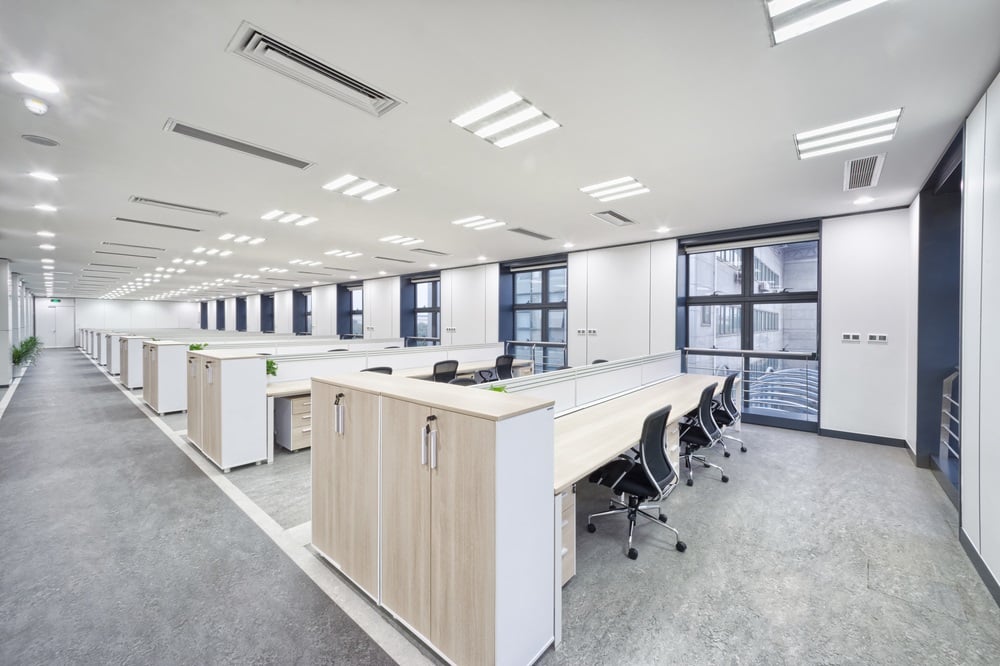When signing a commercial lease, tenants may look at only the base rent amount. They are surprised when common area maintenance (CAM) charges result in a monthly rent bill that is higher than expected. Tenants may receive an additional surprise at the end of the year when they receive a bill for a CAM shortfall.
CAM charges are based upon the costs of running the “common areas” or shared areas of the building. These charges might include things like utilities, cleaning maintenance, taxes, and insurance. Because the tenants all benefit from the use of the common areas, CAM charges are allocated among the tenants.

CAM charges are customary in most commercial leases. However, tenants can and should negotiate CAM charge provisions in their leases to assure that the allocation is fair and to minimize unexpected impact on a business’ bottom line. Some of the areas in which CAM charges may be negotiable are as follows:
- Base Year – The beginning rent amount typically assumes a set amount for CAM charges, frequently based upon annual charges in the year before the lease is signed (Base Year). Tenants pay their pro rata share of increases in CAM charges over the Base Year amount. Frequently, a tenant can negotiate the Base Year to be the year in which the lease is signed, rather than the previous year. Tenants negotiating leases renewals should request an update of their Base Year for CAM charges.
- Caps on Controllable Expenses – Real estate operating expenses frequently are divided into “controllable” and “uncontrollable expenses. Uncontrollable expenses include things like taxes, utilities, and insurances, which must be paid and for which the landlord cannot negotiate the cost. Controllable expenses are everything else. Tenants should request a cap on annual percentage increases of controllable expenses included in CAM. Landlords frequently will agree either to a cap based upon the Consumer Price Index (CPI) or a fixed percentage. It is rare for landlords to agree to caps on increases for uncontrollable expenses.
- Minimum Occupied Percentage Assumption – It is rare for a building to be 100% occupied. CAM typically is calculated based upon the tenant’s percentage in relation to all space occupied by tenants in the building. As a result, in a building that has low occupancy, the tenant can end up paying a greater percentage of CAM charges than it would pay if the building were close to 100% occupied. Tenants should negotiate a minimum assumed occupied percentage. Eighty-five or ninety percent is reasonable. This should be stated as a minimum, rather than an assumed occupancy. If the building occupancy is, for example, 95%, then that higher number should be used to compute the tenant’s relative percentage.
- Capital Expenditures – Landlords frequently will attempt to include capital expenditures in CAM, even though under accounting rules, those expenditures might be allocated over several years. For instance, one landlord with which I worked replaced all the lighting fixtures in the building with LED fixtures, at a significant cost. Those charges were passed through to tenants in the CAM charges in the year the upgrade was made, even though the utility cost savings resulting from the LED fixtures would be enjoyed in future years. Tenants should attempt to negotiate allocation of capital expenses to CAM (if at all) in accordance with either tax accounting or generally accepted accounting principles.
- Administrative Fees – Some landlords will try to include an “administrative fee” or “operations and maintenance fee” in CAM. These fees may be included expressly, or the landlord may attempt to include them via a “catch-all” clause in the description of CAM charges. Tenants should request that non-transparent fees be removed and be sure that “catch-all” clauses are narrow enough that they do not allow inclusion of these fees in CAM. If the landlord has legitimate common area expenses, they can and should be listed in the lease, rather than buried inside of percentage fees. At a minimum, the tenant should insist that the lease include a specific cap on any such fees.
- Costs of Ownership – In general, the costs of owning the building should not be included in CAM. Most landlords will not attempt to include their mortgage interest in CAM, but they might try to include audit costs, accounting costs, legal fees, building marketing, and other expenses from which the tenants do not receive a benefit. Tenants should attempt to negotiate the CAM language so that CAM charges include only charges from which tenants directly benefit.
- Reimbursable Costs – CAM should never include costs that may be reimbursed to the owner from another source. Repairs covered by insurance, eviction costs, tenant improvements, and real estate broker fees not should be included in CAM.
By using an experienced real estate attorney or commercial tenant broker, tenants may be able to negotiate of CAM provisions in their leases. Although this may take some time and expense up front, in the long run this effort can save money by preventing unexpected increases in their rental bills.
Elizabeth Whitman is an attorney and broker who has represented clients in more than $1.3 billion in real estate transactions.Elizabeth's law firm, Whitman Legal Solutions, LLC, is located in suburban Washington, DC and represents real estate owners and securities sponsors throughout the nation.
Latest posts by Elizabeth Whitman
(see all)